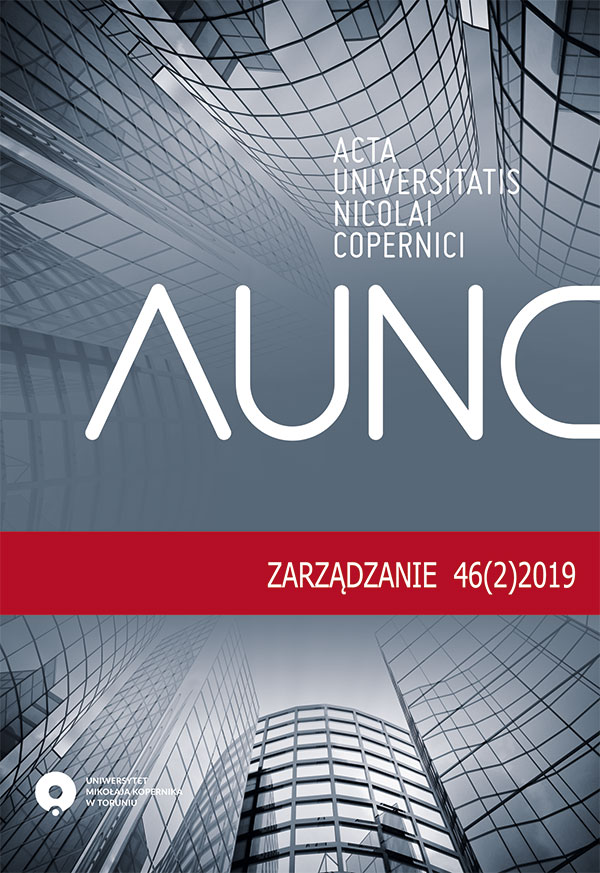MATHEMATICAL MODEL OF CURRENT CAPITAL’S OPTIMIZATION AND MANAGEMENT
DOI:
https://doi.org/10.12775/AUNC_ZARZ.2019.009Słowa kluczowe
current capital, current capital components, stocks, accounts receivable, cash, optimizationAbstrakt
Current capital management is an important part of the enterprise management system. Determining the optimal value of its components allows more effectively using assets and investing resources. In order to determine the optimal value, it is necessary to determine the basic interdependence between these components. The process of optimization is based on the relationships and interactions between the components of current capital. The mathematical model of optimization of current capital components has been formed and proposed for the purpose of determining the optimal value of each of the components, which will enable the company to more effectively use available resources and production capacities and prevent inappropriate spending and investment of resources. This model is based on the Lotka–Volterra equations and represents a system of three differential equations that describe the interactions and interdependencies between the components of current capital, determining their optimal size, which ensures the continuity of economic activity, in the use of all production capacities of the enterprise and will help to prevent inefficient spending and investment in assets. The model is created in the process of PhD thesis writing.Bibliografia
Lotka–Volterra equations. (2019). In Wikipedia. Retrieved from https://en.wikipedia.org/w/index.php?title=Lotka%E2%80%93Volterra_equations&oldid=896857326
Mathematical model. (2019). In Wikipedia. Retrieved from https://en.wikipedia.org/w/index.php?title=Mathematical_model&oldid=896187818
Власова, Н. О. (2014). Управління оборотними активами на підприємствах роздрібної торгівлі (ХДУХТ). Харків.
Гринюк, І. (2016). Методичні підходи до визначення сутності оборотного капіталу. Матеріали ІІ Всеукраїнської науково-практичної інтернет-конференції з міжнародною участю, 3, 156–159. Луцьк: РВВ Луцький національний технічний університет.
Завадський, Й. С., Осовська, Т. В., & Юшкевич, О. О. (2006). Економічний словник. Київ: Кондор.
Коэффициент ранговой корреляции Кендалла. (n.d.). Retrieved 2 June 2019, from https://math.semestr.ru/corel/kendel.php
Кузнецов, С. В., & Ириков, И. В. (2001). Математическое моделирование задач управления финансовыми потоками. Электронный Журнал Исследовано в России, 1442–1464. Retrieved from https://cyberleninka.ru/article/v/matematicheskoe-modelirovanie-zadach-upravleniya-finansovymi-potokami
Чупілко, Т. А., & Чупілко, С. І. (2016). Математична модель оптимізації оборотного капіталу торгового підприємства. Збірник Наукових Праць Дніпродзержинського Державного Технічного Університету, (1(28)), 113–117.
Шиндирук, І. П. (2012). Економіко-математичне моделювання та оптимізація структури капіталу підприємств. Фінанси України, (2’2012), 111–118.
Pobrania
Opublikowane
Jak cytować
Numer
Dział
Statystyki
Liczba wyświetleń i pobrań: 751
Liczba cytowań: 0







